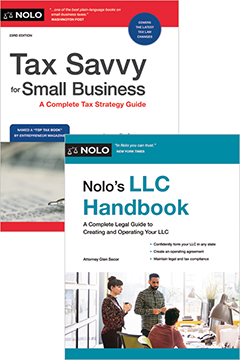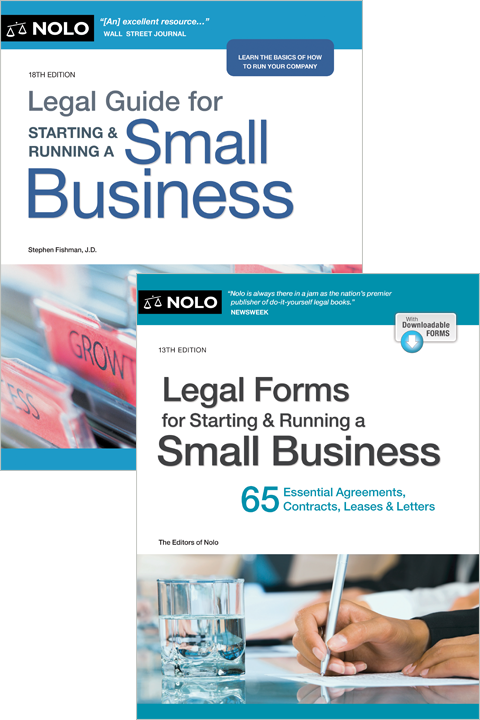Running your business as an S Corp can have both advantages and disadvantages. This article discusses the 5 questions you should ask before making an S Corp your entity of choice.
Choosing to run your business as an S corporation (S Corp) can have significant consequences and benefits. When forming (incorporating) an S corp, there are five things in particular that you should think about before you file any official documents.
This article assumes that you've already chosen a corporation as your preferred entity type—instead of a limited liability company (LLC), partnership, sole proprietorship, and the like—and would like the Internal Revenue Service (IRS) to treat your corporation as an S Corp for tax purposes. (For further information on how to pick the corporate entity type that's best for your particular situation, see our section on choosing your business structure.)
Will My Company Be Eligible for S Corp Status?
The very first thing you should do before starting an S Corp is to determine whether your company will meet the legal standards required by the IRS. To operate your business as an S Corp, you must initially file your company as a regular corporation (also called a "c corporation") in your selected state of incorporation.
To be eligible for S Corp status, the IRS requires that your corporation meet certain specific criteria, including the following:
- The company must be a domestic corporation.
- The company's shareholders (sometimes called "stockholders" in certain jurisdictions) must be individuals or certain allowable trusts and estates.
- No shareholder can be classified as a partnership, corporation, or non-resident alien.
- The company can't have more than 100 shareholders.
- The company can have only one class of stock.
- The company can't be an ineligible corporation. (For example, certain financial institutions, insurance companies, and domestic international sales corporations are disqualified from becoming S corps.)
If you formed your business as an LLC, you might still be able to elect to be taxed as an S corp. Many states allow LLCs to convert to corporations. If you're in one of these states, you can convert your LLC into a corporation—usually by filing paperwork with the state. After the conversion, you must file Form 2553, Election by a Small Business Corporation. (For additional information on the potential tax advantages of an S Corp, see why you might choose S corp taxation for your LLC.)
Will an S Corp Give Me Tax Advantages?
The primary attraction of having the IRS treat your company as an S Corp rather than as a regular corporation is more favorable tax treatment. In general, S corps provide more benefits than costs. But there can be situations where electing to be taxed as an S corp isn't the best choice for your business.
You can learn more about c corporations in our article on how corporations are taxed.
Advantages of S Corporation Status
The IRS treats a corporation as a person for federal tax purposes, which results in double taxation for its shareholders. In other words, the IRS will:
- first, tax the corporation as an entity, which reduces the remaining funds available (if any) for dividends to its shareholders, and
- second, tax the corporation's individual shareholders on a personal level, resulting in double taxation for these individuals.
In contrast, an S corp benefits from pass-through taxation from the IRS, meaning it won't be taxed at all at the entity level. Electing S-Corporation status passes the income or losses of the corporation to the shareholders who recognize the income or loss on their personal tax returns. This election is advantageous if the corporation expects to show a loss at first. The loss can offset the shareholder's income from other sources, including a spouse's income.
Disadvantages of S Corporation Status
Passing income through to shareholders can be a disadvantage in some instances. If the business is profitable, shareholders will be required to pay income tax on their share of the profits, even if that money isn't distributed to them. In a C corporation, profits can be used to expand the business, and shareholders aren't required to pay taxes until distributions are made. (To learn more, see our article on S corporation shareholders and taxes.)
Reasonable salaries paid to employees are deductible business expenses for both S corps and C corporations. However, some fringe benefits might not be tax deductible for an S corp in the same way they'd be with a C corporation.
In addition, even though losses pass through to shareholders in an S corp, those losses aren't deductible by shareholders who don't materially participate in the business. This discrepancy could result in higher taxes overall.
If, at some point in the future, your company or its stakeholders pay more taxes as an S corp than it would as a C corporation, you can revoke your election with the IRS. You'll need to submit a statement of revocation with the IRS to revert back to C corporation taxation.
Do I Have a Tax Adviser?
Having an accountant or tax attorney advise you both during and after the incorporation process will allow you to best determine the potential tax benefits of electing S Corp status. Once you've determined that taxation as an S Corp is the best choice for you, your adviser can also show you how to best take advantage of these tax benefits.
Among other things, a tax adviser can:
- inform you how to get your company's employer identification number (EIN) and use it to open up a bank account
- give you a tutorial on what you can write off as business expenses for tax purposes
- suggest how you can retain receipts and maintain your internal financial records, and
- guide you on how to make and record periodic cash distributions to shareholders, if applicable.
Importantly, your accountant can file your S corp taxes for you. It's best to keep up with your tax professional throughout the year so they can make a timely filing.
How Do I Obtain S Corp Status?
To have the IRS treat your C corporation as an S Corp for tax purposes, you'll need to make a Form 2553 tax election when filing the company's federal tax returns. You must complete the filing by a specific deadline to elect the tax status for the current year. Form 2553 must be signed by all of the company's shareholders.
Your accountant or tax attorney can assist you with this tax election process.
Will My S Corp Be Attractive to Investors?
If you're contemplating having one or more investors help capitalize your business, or could potentially seek investors at some point in the future, then forming an S Corp could prove problematic.
S Corps Limit the Investor Pool
As an S corp, you're limited in the kinds of investors you can have. For liability, tax, and personal reasons, investors often make their investments through corporate entities (for example, C corporations, LLCs, or partnerships), not individually. Because the shareholders of an S Corp can only be individuals or certain allowable trusts and estates, this limits the universe of investors that'd be available to you.
Also, the S corps only allow for U.S. residents to be shareholders. This restriction would prevent any non-U.S. residents from investing in your corporation unless you choose to abandon the company's S Corp status.
S Corp Restrictions and Investors
Investors typically want a return on their investment (ROI) as quickly as possible and seek to contractually protect their ROI.
To protect their ROI, investors might require a corporation to create different classes (or series) of shares. The idea would be that the corporation would then issue the class of shares to the investor that has superior or preferential, rights. However, this option isn't available under an S corp because S corps can only have one class of shares. As a result, investors might find S corps less appealing.
An investor might want to be fully repaid for their investment before any other shareholders receive distributions on their shares. Sometimes an investor will agree not to receive any ROI until the company is sold or liquidated, in which case no other shareholders would get a penny until the investor has been repaid in full.
Remember that, in general, investors might demand corporate control in exchange for their financial contributions. Investors typically want to further protect their ROI by demanding certain control rights regarding:
- share transfers
- corporate management
- distributions
- acquisitions
- divestitures
- liquidation
- dissolution, and
- other matters.
These investors' rights are usually memorialized in a shareholders' agreement (sometimes called a "stockholders' agreement" in some jurisdictions), an investors' rights agreement, or a similar document. Sometimes the investor requires the company to amend or restate its articles of incorporation (called a "certificate of incorporation" or "charter" in some jurisdictions) to reflect these rights.
Working With a Business Attorney or Tax Professional
If S corporation restrictions become an issue when attracting investors, seek out professional help. A tax adviser can guide you through the added complexity of safeguarding investor ROI under a more restrictive S Corp structure or assist you in converting your S Corp into a more flexible entity (for example, a C corporation or an LLC). An attorney can also help you negotiate alternative solutions with investors.
|
|



